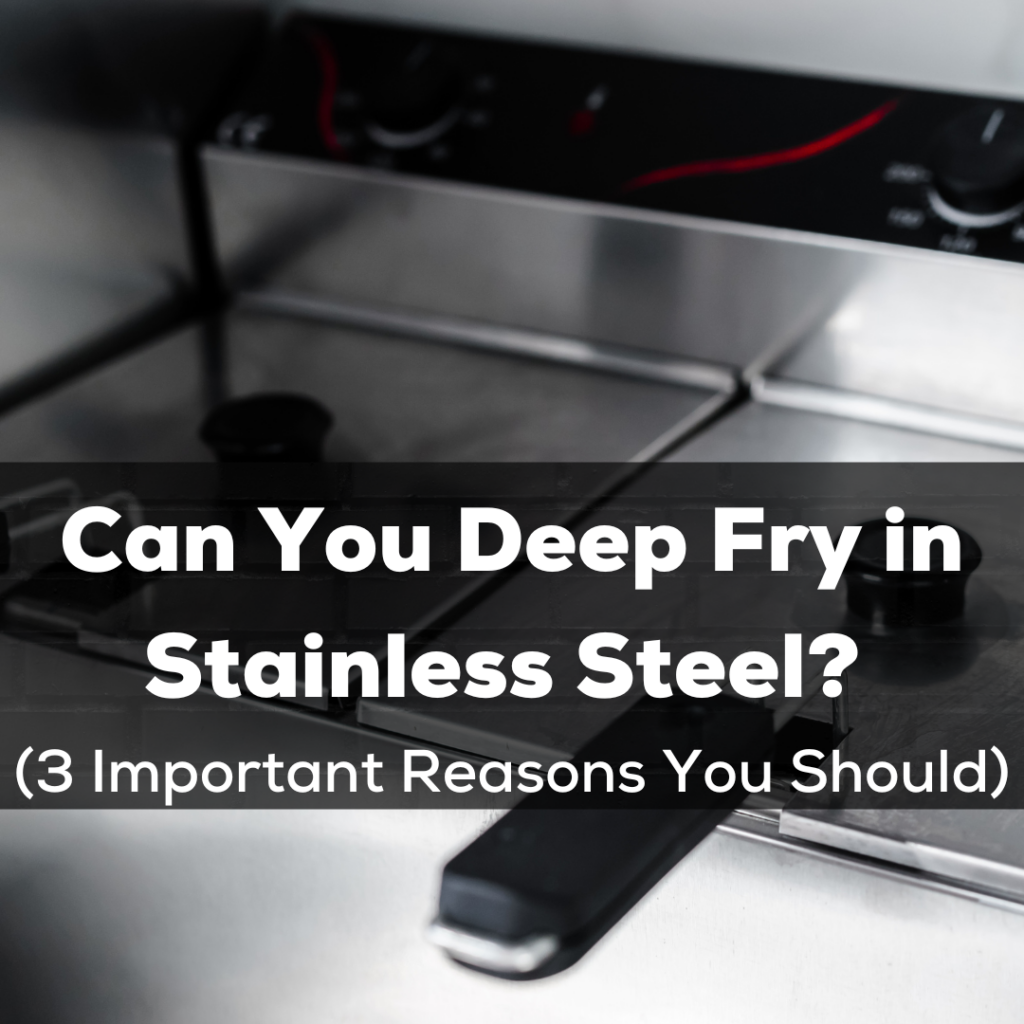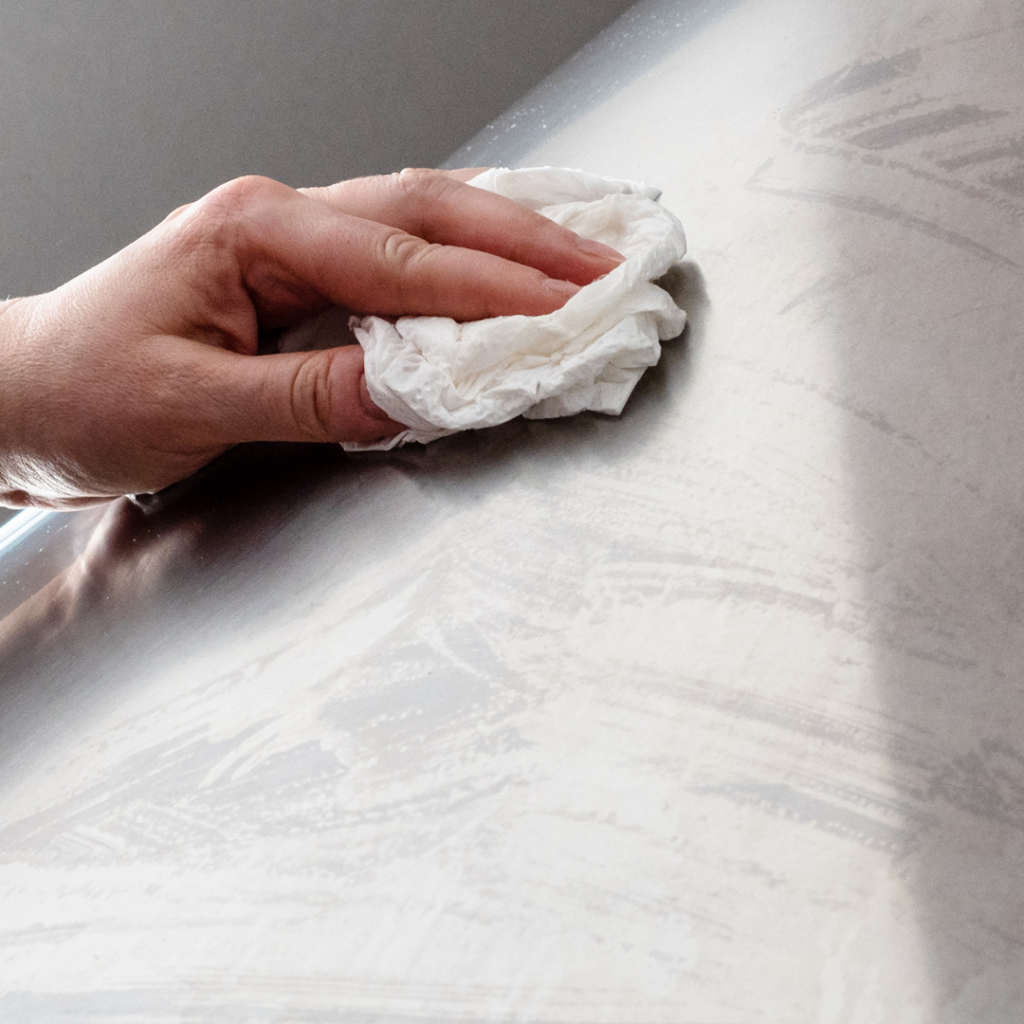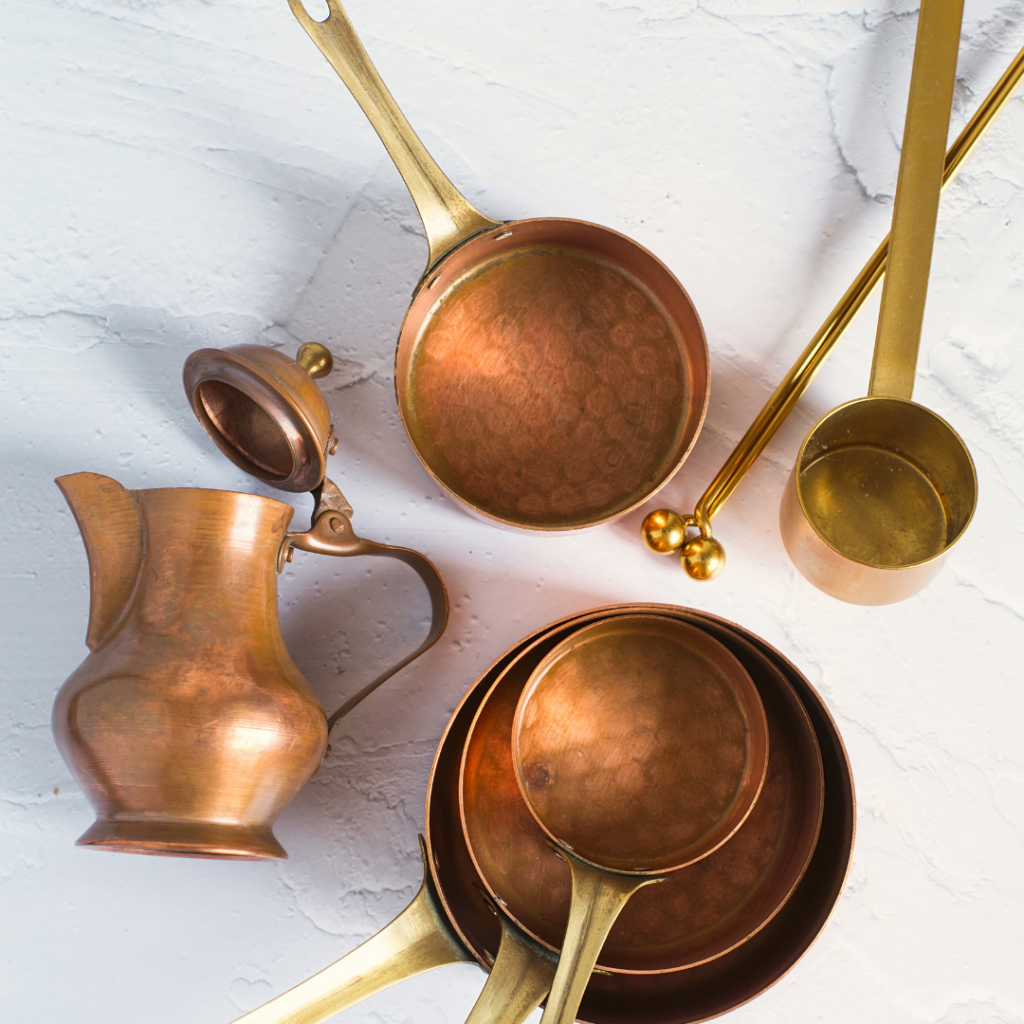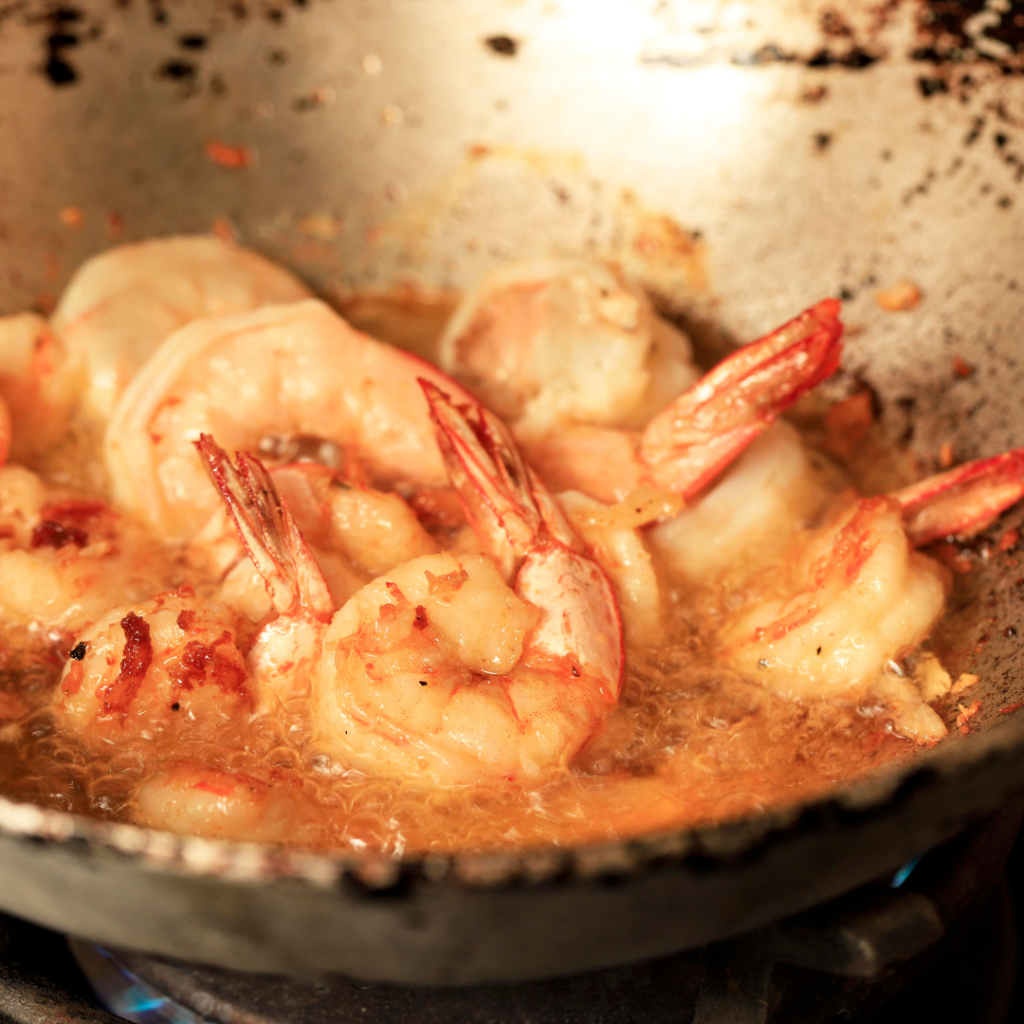Can You Deep Fry in Stainless Steel? (3 Important Reasons You Should)
When it comes to deep frying, choosing the right cookware is essential. If you’re looking around the kitchen for the right receptacle for your next deep frying experience, you may be wondering, “Can you deep fry in stainless steel?” What about ceramic?
Stainless steel pots and pans are known for their durability and for their even heat distribution, making them a great choice for a number of cooking methods, including deep frying. Just make sure to use a receptacle that’s large enough to accommodate your food of choice. Ceramic is also a good choice for frying, though when using a pan of this material, make sure to cook on medium or low heat.
If you’re looking to learn more about deep frying with stainless steel, whether you want to make french fries or chicken wings, check out the rest of this article, where we’ve created the ultimate guide on this topic.

Can You Deep Fry in Stainless Steel? (3 Reasons You Should)
Deep frying in stainless steel is easy and perfectly safe. The following attributes provide conclusive evidence for the notion that stainless steel is the optimal material for deep frying. Read the headings below to learn more!
Heat Distribution
When you deep fry in stainless steel pans, you’ll notice that they typically provide excellent heat distribution. This means the heat spreads evenly across the surface of the pan, allowing your food to cook uniformly.
This is important as it ensures that every piece is properly cooked and reduces the risk of undercooking or burning your food.
Heat Retention
Another advantage of using stainless steel pans for deep frying is their heat retention capabilities. Stainless steel holds heat well, which means that once your oil reaches the desired temperature, it will retain that heat throughout the cooking process.
This is beneficial in maintaining the oil temperature and ensuring that your food cooks at a consistent rate.
Easy Clean-Up
Deep frying can be a messy business! Stainless steel is easy to clean and really shines as soon as the grease is removed, making it the perfect material for the task of frying. Just use a bit of degreaser, wipe it up, and it will be ready to use again!

Considerations for Deep Frying in Stainless Steel
Though stainless steel is a great medium for deep frying, there are still a few things you’ll want to consider. Be sure to read the list below before you try it at home!
Depth and Safety
When choosing a stainless steel pan for deep frying, you should consider the depth of the pan. A deep pan is ideal for this cooking method, as it allows you to immerse the food fully in oil without overflowing or splattering. This is not only convenient but also safer, as it reduces the risk of oil splashing out of the pan, which could lead to burns or fire hazards.
Technique
To successfully deep fry in a stainless steel pan, follow these steps:
- Choose a deep stainless steel pan with a stable, flat base and high sides.
- Fill the pan with enough oil to fully submerge the food you’re frying, but not so much that it overflows.
- Use a thermometer to monitor the temperature of the oil to ensure it reaches and maintains the ideal frying temperature (typically between 350°F and 375°F).
- Carefully lower the food into the hot oil using a slotted spoon or frying basket, taking care not to overcrowd the pan.
- Cook the food until it reaches the desired level of crispiness and color, then carefully remove it from the oil, letting any excess oil drain off.
- Place the cooked food on a wire rack or paper towels to absorb any remaining oil and allow it to cool slightly before serving.
Using a Frying Basket
A frying basket can be a handy tool when deep frying food in stainless steel pans. It helps to:
- Keep your food item together, making it easier to submerge and remove from the oil
- Ensure even cooking by allowing oil to circulate around the food
- Prevent food from sticking to the bottom of the pan
To use a frying basket, simply place your food items into the basket and slowly lower it into the heated oil. Once the food is done cooking, lift the basket out and allow the excess oil to drain before transferring the food onto a paper towel-lined plate.
Medium Heat Frying
When deep frying in stainless steel pans, you must make sure you maintain a consistent temperature. One approach to accomplishing this feat is medium heat frying, which offers several benefits:
- It reduces the risk of food burning or becoming overly browned on the outside while undercooked on the inside
- It allows for better oil absorption and even browning
- It preserves food quality and taste
To achieve medium heat frying, preheat your oil to a temperature between 350°F and 375°F. Use a cooking thermometer to monitor the oil’s temperature and adjust the heat accordingly to maintain consistency.
Just remember to be careful when working with hot oil. Beware of getting it in your eyes or allowing it to splash on your skin.
Stainless steel vs Other Pans Good for Deep Frying
When it comes to deep frying, the type of pot or pan you choose can greatly affect your cooking experience. In this section, we will compare stainless steel with other commonly used materials, such as cast iron, ceramic Dutch ovens, aluminum, carbon steel, and copper.
Each material has its pros and cons, depending on the intended use. Let’s dive into each one’s performance for deep frying.
Cast Iron
Cast iron is a popular choice among home cooks due to its excellent heat retention and even distribution. Frying in cast iron helps maintain a consistent frying temperature, which is a must-have when trying to get the perfect crispy exterior.
One downside of cast iron is that it can be heavy, making it difficult to handle when filled with hot oil. It can also be extremely expensive and may not come in a pan with proper depth for frying most common foods.
Dutch Oven
A Dutch oven, typically made of enameled cast iron or ceramic, is another great option for deep frying. Its thick walls and heavy bottom make it a great distributor of heat, keeping your oil at the right temperature.
Be cautious with enameled surfaces, and avoid using metal utensils, as they can scratch the enamel. If your Dutch oven is made of ceramic, make sure to heat the oil to medium or medium-low temperature, as extremely high temperatures may cause the ceramic to crack.
Don’t choose ceramic if you don’t really know how to deep fry, as this material can be a bit tricky.
Aluminum
Aluminum is a lightweight option for deep frying, but it does not provide the same level of heat retention and distribution as other materials.
If you choose to go with an aluminum pan, you may not get even results. One benefit of aluminum, however, is that it heats up quickly, decreasing the time it takes to reach your desired frying temperature.
Carbon Steel
Carbon steel is a hybrid of cast iron and stainless steel – it shares the even heat distribution of cast iron while being lighter in weight.
One problem with carbon steel is that it’s not a non-stick surface. If you fail to properly coat the bottom of the pan, it may mess up your golden-brown finish. Carbon steel can also be prone to warping at high temperatures if not properly maintained.
Copper
Copper is the first choice of many professional chefs because of its excellent heat conductivity and precise temperature control. Copper heats up quickly and evenly, making it perfect for deep frying. Copper cookware is typically more expensive, however, and requires regular polishing to maintain its appearance.

Choosing the right stainless steel pan
If you do decide to go with a stainless steel pan for deep frying, you’ll want to make sure you’re informed on the various different types of stainless steel cookware out there. Below you’ll find a few possible options.
Clad stainless steel
Clad stainless steel pans are made by layering different metals together, which provides multiple benefits, such as even heat distribution, excellent heat retention, and increased durability. For deep frying, look for a heavy-bottomed pan that features an aluminum or copper core sandwiched between stainless steel layers. This construction ensures a more consistent frying temperature and prevents hot spots that could cause your food to cook unevenly or burn.
All-clad pans
One of the most popular stainless steel brands on the market is a company called All-Clad. Their unique stainless steel cookware is high-quality, and the ubiquity of their products in the stainless steel market has made their name synonymous with this material. If you’re looking to deep fry in Allclad, you’ll need to make sure you understand how their products work. They are known for their induction cookware, and their products can be purchased on Amazon, as well as at most retail stores.
Woks
If you enjoy stir-frying, consider adding a stainless steel wok to your cookware collection. Woks’ unique shape allows you to deep fry food effectively with less oil than a traditional pan. The curved sides make it easier to toss food during the cooking process, producing even browning and crisping.
Some woks come with a flat bottom, which allows the pan to maintain optimal contact with your stove’s heat source.
Saucepan
A stainless steel saucepan can be an adequate substitute for a true frying receptacle in a pinch. This tool is best used for simmering.
When selecting a saucepan for deep frying, make sure to choose a heavy-bottomed one with a tight-fitting lid. This will help maintain consistent temperatures and reduce the risk of oil splatter.
Types of cooking oil for deep frying
If you’re planning to deep fry in stainless steel, you may be wondering which type of oil is best. We’ve broken down each common type of cooking oil and detailed the various positives and negatives of their usage with this type of cookware. Read this list to determine the best oil for deep frying.
Vegetable Oil
Vegetable oil is a common choice for deep-frying due to its affordable price and availability. It has a high smoke point, which means it can handle high heat without breaking down. This is important when deep-frying, as it prevents your food from absorbing the oil and becoming greasy.
Canola Oil
Canola oil is a popular choice for deep-frying because of its neutral flavor and high smoke point (around 400°F/204°C). This oil is also low in saturated fats, making it a healthier option for frying. It’s important to monitor the temperature when using canola oil to prevent it from breaking down and producing unpleasant flavors.
Olive Oil
Olive oil, particularly light or extra light varieties, can be used for deep-frying due to its higher smoke point compared to extra virgin olive oil. Light olive oil has a smoke point of about 468°F (242°C), making it suitable for high-temperature cooking. However, the high cost and distinct flavor of olive oil can be a drawback when using it for deep-frying.
Peanut Oil
Peanut oil is another popular choice for deep-frying because it, too, has a high smoke point (about 440°F/227°C) and mild flavor. It can handle high temperatures without breaking down and imparts a subtle nutty flavor to food. Just make sure no one eating your food has a peanut allergy.
Avocado Oil
Avocado oil is a newer option in the world of deep-frying, boasting one of the highest smoke points -around 520°F (271°C). This heart-healthy oil is rich in monounsaturated fats and has a mild, buttery flavor. It is, however, a more expensive option.
Sunflower Oil
Sunflower oil is another good option for deep-frying, its smoke point is about 450°F/232°C), and it has a mild, slightly nutty flavor. It’s also low in saturated fats and generally affordable. When using sunflower oil for deep-frying, keep an eye on the temperature to ensure it stays within the safe range for frying without breaking down.

Cleaning and maintaining stainless steel cookware
One of the best reasons for frying in stainless steel is the easy clean-up process. Below you can read about a few different ways to properly clean the grease out of stainless steel after deep frying.
Baking Sheets and Paper Towels
When cleaning your stainless steel cookware after deep frying, start by using a baking sheet and paper towels. Place the sheet under a cooling rack and let your cookware drain excess oil onto the paper towels. Once drained, gently wipe the interior and exterior with a soft cloth or sponge to remove any remaining oil and food residue. Make sure to clean both the handles and the body of the cookware.
Use Degreaser
Keep your stainless steel looking shiny and new by using a degreaser such as Bar Keepers Friend. This substance is a non-abrasive cleaner is perfect for removing stubborn stains and marks. Simply mix the powder with water, forming a paste. Apply the paste to the surface of your cookware, let it sit for a few minutes, and then scrub gently with a soft-bristle brush or cloth. Rinse thoroughly to ensure all residue is removed.
Avoiding Rust and Damage
To prevent rust and damage, you need to make sure you properly dry and store your stainless steel cookware:
- Dry thoroughly: Make sure your cookware is completely dry before storing it. Any remaining moisture can cause rust over time.
- Store in a cool, dry place: Keep your cookware in a well-ventilated area, away from direct sunlight and humidity.
- Store with lids off: Remove the lids when storing the pots and pans to allow air circulation and prevent moisture buildup.
- Only use stainless steel-safe utensils: Avoid using metal utensils that can scratch the surface of your cookware.
By taking these steps, you can ensure your stainless steel cookware remains in great condition even after prolonged use in deep frying. With regular cleaning and proper maintenance, your cookware will last for years to come.
How much oil should you put into the pan you are deep frying in?
The amount of oil you use really depends on what type of frying you’re hoping to do. In some cases, you may just need to coat the bottom of the pan. In other cases, you may need to completely submerge the food you want to fry.
Where can you buy a stainless steel fry pan?
You can purchase a stainless steel pan at almost any retail store that sells cookware or online. Stainless steel is one of the more common types of material for frying foods.
Can you use a cast iron pan for deep frying?
Cast iron is a great material for deep frying. Though it is heavy and expensive to obtain, people have been frying food in cast iron for centuries.
Let Us Know How We’re Doing!
Did this expertly prepared resource answer your question?
Do you have another question about home maintenance, home improvement projects, home appliance repair, or something else?
Get more information, send in questions and keep the discussion going by contacting the I’ll Just Fix It Myself company customer service team at at 1-800-928-1490 or Email us at [email protected]
